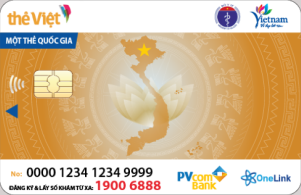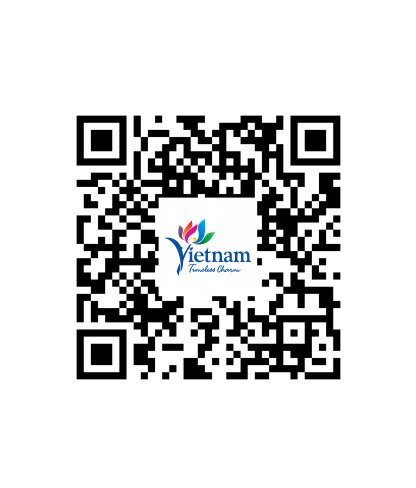(TITC) - On 21st December, in Lao Cai, Viet Nam National Authority of Tourism (VNAT), in coordination with The Central Office for New Rural Area Coordination, an office under the Ministry of Agriculture and Rural Development (MARD), organised a workshop on improving the quality of agricultural and rural tourism products associated with the exploitation of medicinal herb regions of Vietnam.
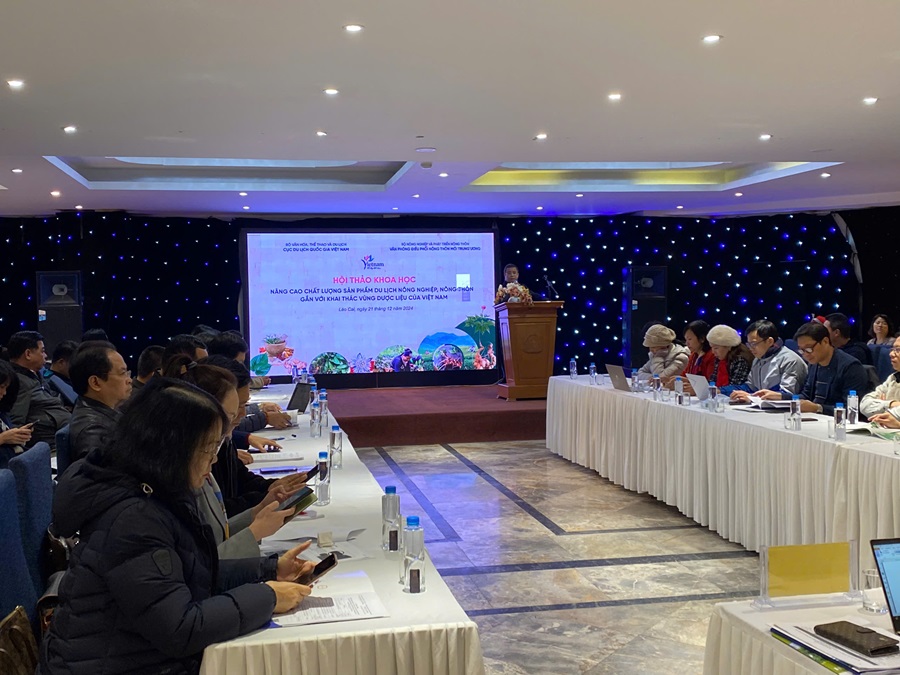
VNAT’s Vice Chairman Nguyen Le Phuc speaking at the Workshop (Photo: TITC)
Speaking at the workshop, VNAT’s Vice Chairman Nguyen Le Phuc said, with favourable natural and climatic conditions, Vietnam is considered a country with rich and diverse medicinal resources with potential for producing and processing medicinal herbs into goods and service products for tourists. The exploitation of medicinal herbs and medicinal products to serve tourism development has been paid attention to and implemented in some localities. However, the quality of tourism products and services associated with the exploitation of medicinal herbs is still limited and many solutions are needed to improve the efficiency of exploiting the value chain between tourism, agriculture, medicinal herbs, and traditional medicine in the coming time.
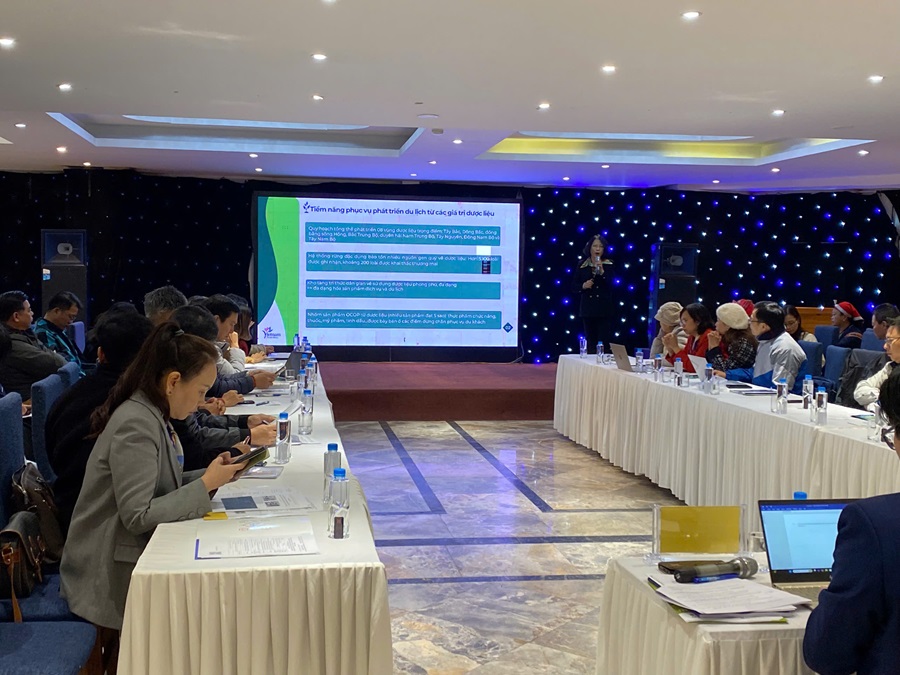
Deputy Head of Travel Industry Management Division (VNAT) Pham Le Thao presenting at the Workshop (Photo: TITC)
According to Ms. Pham Le Thao, the Deputy Head of Travel Industry Management Division (VNAT), in order to promote the value and bring added value from medicinal herbs to serve tourism development, many provinces and cities across the country, including key tourist destinations, have issued plans/projects to develop tourism, eco-tourism, and community tourism associated with the exploitation of medicinal herbs and traditional medicine, such as Lao Cai, Quang Ninh, Lang Son, Thua Thien Hue, Quang Nam, Kon Tum, Kien Giang, Can Tho, Ninh Binh, Vinh Phuc, Hanoi, Dong Nai… Most medicinal herb growing areas are places with ideal soil, climate and ecological landscape conditions to organize eco-tours, sightseeing programs, learning about medicinal herb growing models combined with culinary, cultural, shopping, health care experiences... are gradually becoming unique tourism products, capable of attracting tourists.
In many localities, health care and beauty products using traditional medicine have become important complementary tourism products, bringing many experiences to tourists and bringing high added value to tourism activities at some destinations. It is worth mentioning the Dao herbal bath service exploited in some localities such as Ta Phin, Sa Pa, Bac Ha, Bat Xat (Lao Cai), Sin Ho (Lai Chau). In particular, Lao Cai is considered an outstanding destination for tourism and medicinal exploitation, including the herbal bath/soaking service of the Red Dao people.
For the tourism industry, medicinal plants play a role as a product of Lao Cai province, meeting the shopping needs of tourists. A typical medicinal product considered a local “specialty” is the bath medicine of the Red Dao people. This famous bath medicine is becoming a unique tourism product of Lao Cai, not only bringing economic value but also helping local people preserve their unique medicinal products.
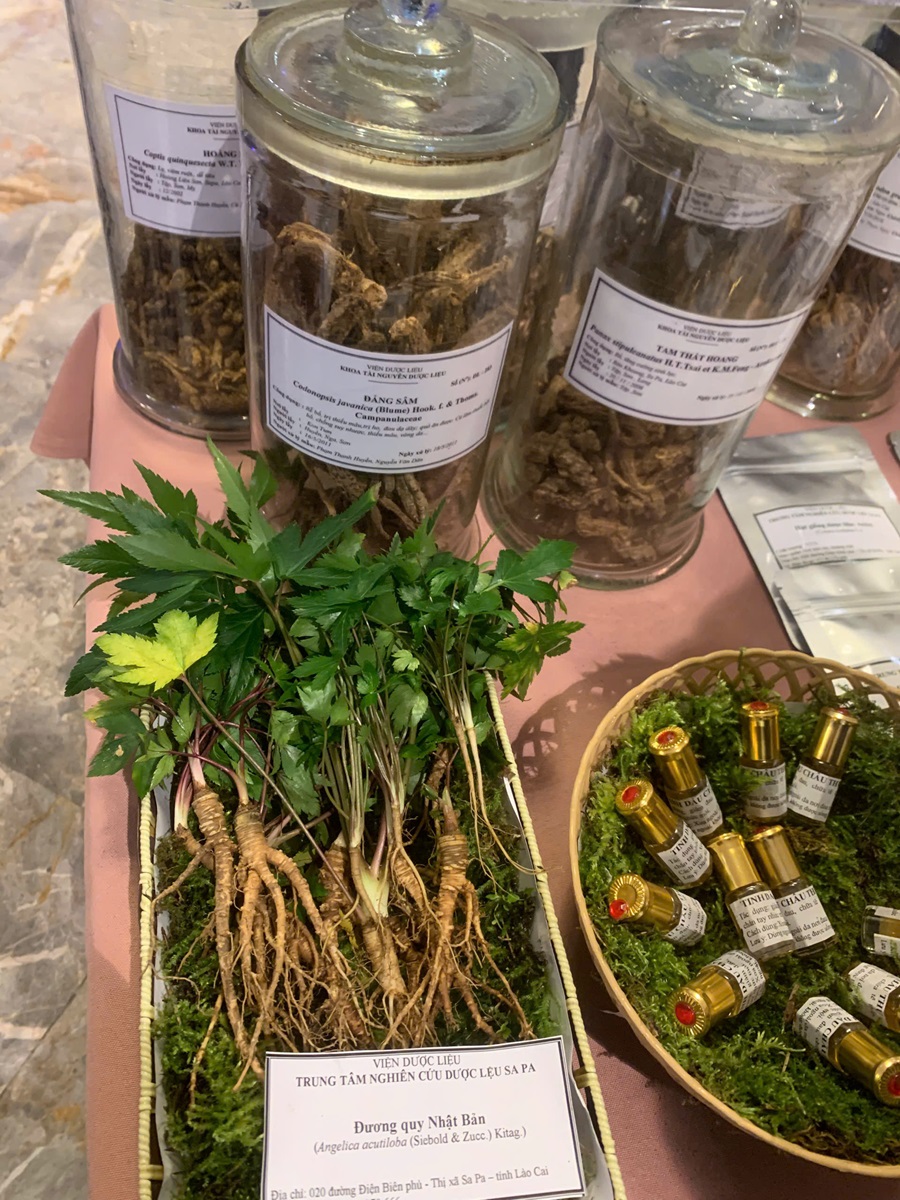
Japanese Angelica medicinal product of Sa Pa Medicinal Research Center (Photo: TITC)
Medicinal plant tourism products have been contributing to promoting economic development and poverty reduction for ethnic minority areas. In addition to health care values, tours to medicinal herb gardens are gradually becoming a unique tourism product, attracting a large number of tourists.
In addition to health care products, dishes and drinks made from medicinal plants with healing effects are being promoted in culinary services at restaurants, hotels, and at households participating in community tourism as a highlight in exploiting indigenous values. Some localities have built models of growing herbs (angelica, jiaogulan, wolfberry, Erythropalum scandens, mushrooms...) to serve the processing of health care products and food and beverage processing to attract and serve tourists (macrobiotic dishes) in Lao Cai, Lam Dong, Ha Giang... Dishes from herbs of the Thai, Tay, Dao, Muong ethnic communities... are commonly exploited at community tourism spots.
Products made from high-quality medicinal herbs, tested and certified by competent authorities and prestigious organizations, especially health care products, meet the needs and tastes of tourists, which are promoted through tourism activities, especially the domestic tourist market. Many OCOP centers and points of sale with medicinal herbs have become stops serving tourists and connecting tours and tourist routes.
Tourism Information Technology Center








